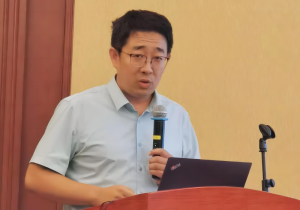Phytolith Research in Southeastern China – First Envoy Post by Xinxin Zuo
- Post by: Admin
- April 9, 2024
- No Comment
The aims of our studies using phytolith analysis are four-fold:
1. Archaeological and cultural aspects
To determine how and when prehistoric agriculture emerged and spread in southeastern China and its relationship to environmental changes. Located on the southeast coast of China, Fujian is a critical junction for the spread and migration of agriculture and populations from mainland Asia to Taiwan and the islands of Southeast Asia. Research on the emergence of agriculture within the regional environmental context is critical to increasing understanding of the evolution of ancient human-land interactions in the coastal zone of China.
2. Palaeoecological aspects
To reconstruct vegetation, climate changes, and human impacts in peatlands of mountainous areas of Southeastern China. Peatlands are common components in mountainous regions of Southeast Asian landscapes, but their vegetation, climate, and hydrological variations remain unclear. To address this issue, several peat bogs in Xiansan and Daiyun Fujian Province, southeastern China, have been sampled to reconstruct a high-resolution record of vegetation change, climatic dynamics, and human impact during the Holocene.
3. Morphological aspects
To determine if phytoliths can be used to distinguish upland rice from wetland rice and then track the origin and dispersal of upland rice in Asia. Upland rice is one ecotype of rice adapted to drier conditions and growing in drier soil. It is a staple food for local people in mountainous areas of East Asian and Southeast Asian countries. However, the origins and cultivation history of upland rice in Asia remain unclear, mainly due to our inability to identify this vital crop in ancient sediments. Phytolith analysis is a promising method for this purpose because it has already been shown to reliably differentiate wild rice from domesticated rice in archaeological sites. We would like to know if there are any diagnostic phytoliths in upland rice that can be used to distinguish them from wetland rice.
4. Chemical and physical aspects
To assess the reliability of phytolith dating, including the radiocarbon dating of PhytOC and optically stimulated luminescence dating (OSL) of phytolith silica. There is increasing interest in using chemical-physical characteristics of phytoliths to provide more information than phytolith morphology alone. A small amount of organic carbon is encapsulated in phytoliths during their formation in plant cells. This carbon fraction has been proven to be an outstanding way of biological carbon sequestration. However, whether it can be used to obtain reliable radiocarbon dates is still unclear. Phytoliths are deposited as hydrated silica (opal-A; SiO2*nH2O) in living plants. Can OSL signals from phytoliths be used to determine when sediments were deposited? Our cutting-edge research strives to answer questions such as: do phytoliths have stable OSL component signals? Are initial OSL signals of phytoliths dominated by the fast or slow component?
Laboratory Team

College of Geographical Science, Fujian Normal University
Student assistants






Wang Shizhe, M.Sc, has titled his thesis: A preliminary study on OSL dating of the phytoliths.


Research projects
Phytolith record of early Holocene environment change and rice agriculture in the north flank of the Yangtze River delta
Founding: National Science Foundation of China
Duration: 2015-2017
Phytolith evidence of rice origin and environmental changes in the East China Sea Shelf during the last deglacial
Founding: National Science Foundation of China
Duration: 2018-2021
Microfossil study of agriculture origin and development in Fujian Province
Founding: National Science Foundation of China
Duration: 2021-2024
Prehistoric agriculture and its environmental background in the Haitan Island, Southern China
Founding: Natural Science Foundation of Fujian Province
Duration: 2023-2025
Future research
Prehistoric agriculture and environment changes in the Southern Islands of China
Plant exploitation and subsistence patterns of the Paleolithic in subtropical China
Selected paper published
Selected Paper from Prof. Zou Xinxin [PDF]

